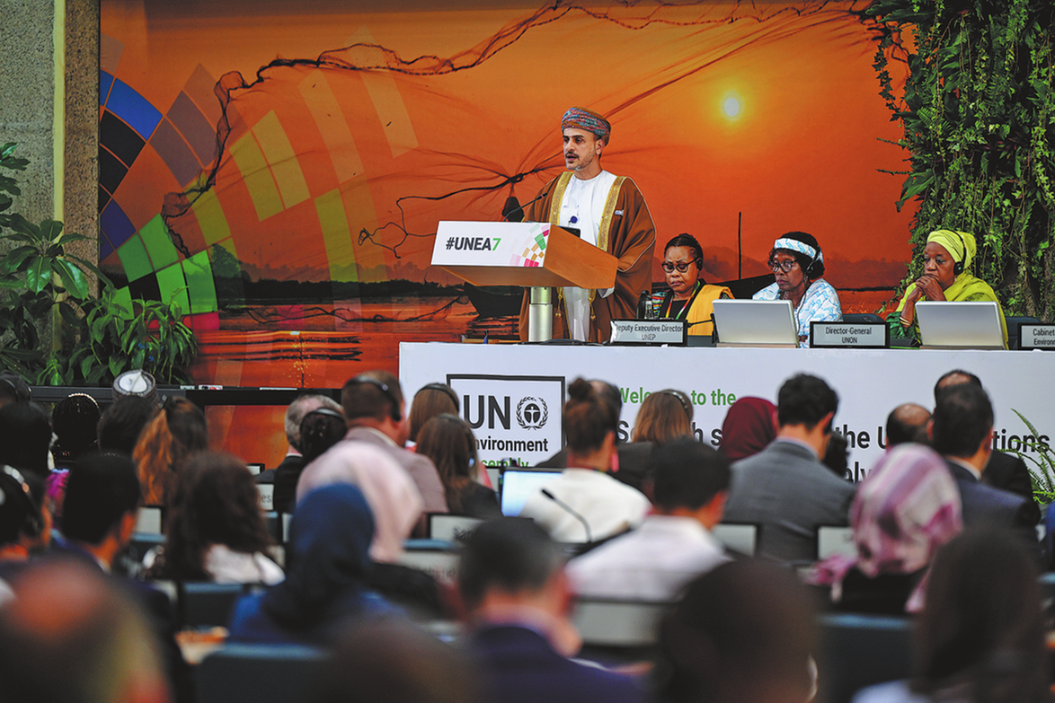Paws crossed for a healthy panda cub or cubs at National Zoo
By Zhao Huanxin in Washington | chinadaily.com.cn | Updated: 2020-08-15 05:39
Mei Xiang, a giant panda who was found to be most likely pregnant in an ultrasound check Friday, has "a very small chance of giving birth" but veterinarians were always hopeful for a healthy cub or cubs, a deputy director of the Smithsonian's National Zoo said.
Zoo keepers have also maintained regular contact with Chinese colleagues even during the COVID-19 pandemic, talking about the health and wellbeing of Mei Xiang, who came to the US capital in 2000 along with Tian Tian, according to Dr. Brandie Smith, Deputy Director of the National Zoo and head of animal care.
The Zoo announced early Friday that Mei Xiang, who turned 22 years old about three weeks ago, may be pregnant, bringing a sign of hope to the nation's capital that is gripped by the brutality of the pandemic.
If successful, "she would be the oldest panda in the United States to give birth," Smith told China Daily.
The record for oldest panda to give birth is held by a 23-year-old female named Haizi, who gave birth at that senior age at China's Giant Panda Conservation and Research Center, according to Smith.
"We communicate with our colleagues in China regularly. We have been talking about Mei Xiang, mostly conversations about her general health and wellbeing," she said. "We knew that, at this age, she had a very small chance of giving birth, but we were always hopeful."
Smith said Mei Xiang is a good mother and takes care of her cubs.
In a decade since 2005, Mei Xiang had given birth to three surviving cubs, Tai Shan, Bao Bao and Bei Bei. The trio have all returned to China in accordance with agreements between China and the United States, according to the Zoo sources.
"We are especially grateful for our Chinese colleagues because they have so much experience with panda cubs and they are great partners and always willing to provide assistance and share information," Smith said.
The Zoo was shut down to visitors in March to contain the spread of COVID-19 but reopened on July 24 with new safety measures, including requiring visitors to reserve passes online ahead of time and capping the number of people allowed in at once.
"The panda house has remained closed because we have been on birth watch," Smith said.
The Zoo has been working throughout the pandemic, almost as usual, to take care of all animals, practicing good health and hygiene because of the potential for zoonotic disease, she said.
"The biggest difference has been that the staff wears surgical masks at all times when working with the animals and with each other," she said.
Early Friday, the Zoo said in a statement that an ultrasound in the morning revealed tissues that indicate a baby panda could be growing, though it is too early to determine if the tissue is a completely viable developing fetus as there is the potential that the fetus could be resorbed.
"If the fetal tissue continues to develop, veterinarians estimate that Mei Xiang could give birth within the next few days," it said.
Reproductive scientists from the Smithsonian Conservation Biology Institute and Zoo veterinarians performed an artificial insemination on Mei Xiang in late March with frozen semen collected from Tian Tian, according to the statement.
"In the middle of a pandemic, this is a joyful moment we can all get excited about," said Don Neiffer, chief veterinarian at the Smithsonian's National Zoo who conducted the ultrasound.
"We are optimistic that very shortly she may give birth to a healthy cub or cubs. We're fortunate that Mei Xiang participated in the ultrasound allowing us to get sharp images and video. We're watching her closely and welcome everyone to watch with us on the panda cams," Neiffer said.
Native to China, giant pandas have long symbolized vulnerable species, with as few as 1,800 living in the wild. Their conservation status improved in September 2016, when the species was upgraded from "endangered" to "vulnerable", thanks to the efforts of the Chinese government, scientists, international conservation organizations and zoos such as the Smithsonian.
(Video by Gao Tianpei)
























